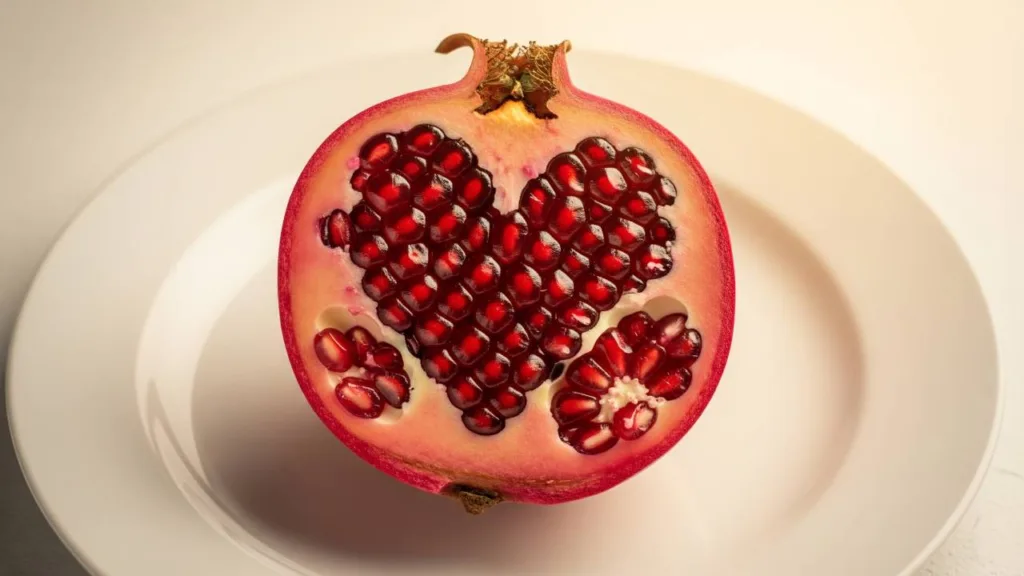
PCOD can really mess with a woman’s life, causing mood swings, hair loss, weight gain, and breakouts. Here’s a PCOD diet chart you can follow to take control and ease the symptoms.
Table of Contents
What is PCOD?
Biologically, women have two ovaries, one on either side of the uterus. The ovaries are reproductive organs that produce hormones like progesterone and estrogen, which help regulate the menstrual cycle.
Now, what happens when an individual develops PCOS (Polycystic ovary syndrome) or PCOD (Polycystic Ovary Disease) is, the ovaries start producing partially mature or immature eggs in large numbers, which over a period of time eventually turn into cysts. Due to these immature eggs turning into cysts, the size of the ovaries increases and they then start releasing a large amount of male hormones called androgens, leading to concerns like infertility, hairloss, abnormal weight gain and irregularities in the menstrual cycle.
It is basically a hormonal imbalance caused by metabolic disorders that affect women from the ages of 12 through 51.
 Is Abortion Legal in India in 2025? →
Is Abortion Legal in India in 2025? →Surprisingly, PCOD or PCOS can be controlled by diet and lifestyle alterations, providing relief from these symptoms.
PCOD Diet Chart: Understanding PCOD and Insulin Resistance
Let’s break it down so you can understand better.
We have established that when women develop PCOS, they release a large amount of the male hormone called androgens. What we didn’t mention is that PCOS also makes the hormone insulin less effective, making it difficult for the body to use it properly. This condition is called insulin resistance.
 Try This Sugar Patient Diet Chart for Stress Free Life in 2025. →
Try This Sugar Patient Diet Chart for Stress Free Life in 2025. →Insulin is the hormone responsible for converting glucose and starch from the foods you eat into energy. As you can imagine, when insulin fails to do its job, glucose is not converted into energy and begins to build up in the bloodstream, increasing the risk of health concerns such as diabetes.
High levels of insulin in the bloodstream further increase the secretion of androgens, which fuels issues like excessive body hair growth, zits, period irregularities, and weight gain.
The silver lining amidst all of this is that you can get your periods back on track just by losing some weight- somewhere around 10% of your body weight. Weight loss will then trigger insulin sensitivity and lower the risks of diabetes, heart conditions and other complications associated with PCOS/ PCOD.
PCOD Diet Chart: Healthy Habits to Support Treatment
To start your journey toward betterment, you should first and foremost visit your doctor, who will check your BMI and prescribe medication tailored to your specific condition. Some medications control testosterone production, while others help insulin function properly, preventing diabetes.
Despite taking the medication prescribed by your doctor, you must be mindful of what you eat.
1. Take up a low-sugar, high-fibre diet, which would include plenty of fruits, vegetables and whole grains. Avoid processed and fried foods to keep your blood sugar levels in check.
2. Try to eat small portions of food, frequently throughout the day, instead of filling your stomach to the brim. Eat multiple times a day but in small quantities each time. This helps in controlling glucose levels in your body.
3. Incorporate physical activity such as walking, jogging, working out, or swimming for at least 30 minutes regularly. If not every day, aim for at least 4 days a week.
4. Monitor your glucose and cholesterol levels regularly
5. Quit smoking or using any substance as soon as possible.
Getting a workout in, taking medications and pairing it up with eating healthy will help you shed weight, get your periods back on track and make you feel a lot better about yourself.
PCOD Diet Chart: Recommended Foods for Hormonal Balance
| Meal | Day 1 | Day 2 | Day 3 | Day 4 | Day 5 | Day 6 | Day 7 |
|---|---|---|---|---|---|---|---|
| Early Morning | Soak 5 almonds/walnuts in warm water with lemon or methi seeds | Same | Same | Same | Same | Same | Same |
| Breakfast | 2 uthappam + green chutney | 2 brown bread slices + low-fat cheese + 2 boiled egg whites | 1 cup vegetable upma (oats) + ½ glass low-fat milk | 2 idlis + ½ cup sambar + tomato chutney | 2 methi parathas + 1 tbsp green chutney | 1 cup mixed veg poha + ½ glass low-fat milk | 2 chapatis + ½ cup green peas curry |
| Mid-Morning | 1 cup raw/grilled vegetables + plain yogurt | ½ cup boiled black chana | 1 portion of fruit | 1 cup green gram sprouts | 1 cup boiled chana | 1 portion of fruit | 1 portion of fruit |
| Lunch | 1 cup rice + chicken curry (150 gm) + cucumber salad | ½ cup rice + 2 chapatis + ½ cup rajma + ½ cup snake gourd sabzi | 2 chapatis + fish curry (100 gm) + ½ cup cabbage sabzi + salad | 1 cup rice + ½ cup soya chunk curry + ½ glass buttermilk | 1 cup rice + ½ cup dal + ½ cup palak sabzi + ½ cup low-fat curd | 2 rotis + ½ cup tomato sabzi | 1 cup rice + ½ cup soya chunk curry + ½ cup ladies finger sabzi + 1 small cup low-fat curd |
| Evening Snack | 1 cup light tea + 2 wheat rusks | 1 cup light tea + ½ cup brown rice poha | 1 cup tea + 2 digestive/oatmeal biscuits | 1 portion of fruit | 1 portion of fruit | 1 cup light tea + 1 cup boiled chana | 1 cup light tea + 2 digestive/oatmeal biscuits |
| Dinner | 2 chapatis + ½ cup mixed veg sabzi | 2 wheat dosas + ½ cup bitter gourd sabzi | 1 cup broken wheat upma + ½ cup green beans sabzi | 2 chapatis + ½ cup ridge gourd (toree) sabzi | 1 cup broken wheat upma + ½ cup green beans sabzi | 2 chapatis + ½ cup ladies finger sabzi | 2 chapatis + ½ cup tomato sabzi |
In addition to including certain foods in your diet, it’s crucial to stay away from others.
PCOD Diet Chart: Steer Clear of These Foods:
- Packaged & Fast Foods: Most of the time, sugary snacks, fast food, and sweetened cereals are heavy in unhealthy fats and refined sugars. These lead to PCOD by increasing insulin resistance, weight gain, and increased glucose levels.
- Sugary Drinks & Treats: Juices, energy drinks, and sweetened soft drinks all have additional sugars, which raise the blood sugar levels. Similarly, the intake of pastries, cakes, local sweets, etc., should be monitored.
- Limit Coffee & Energy Drinks: Limit your caffeine intake because it can mess up the hormonal balance in your body.
- Red & Processed Meats: A higher risk of PCOD has been associated with a high intake of red meat, especially processed red meats like sausages and hot dogs.
PCOD Diet Chart: F.A.Q.
1.How to cure PCOD/PCOS permanently?
Ans: Unfortunately, PCOD/PCOS does not have a cure yet; the problem and its symptoms can only be controlled and monitored.
2. Can women with PCOD/ PCOS get pregnant?
Ans. Yes, with proper consultation with your gynecologist, careful planning, and follow-up checkups, you can prevent any hiccups in the future.
3. Is milk bad for women with PCOD/PCOS?
Ans. “Dairy is best avoided if you have PCOS, especially if your testosterone or androgen levels are high” quotes nutritionist Lovneet Batra. Low-fat or plant-based milks, such as almond or oat milk, are considered a better option.


